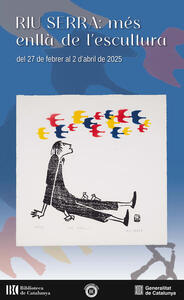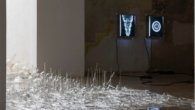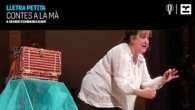
SERRA RIVER: Beyond sculpture / exhibitions / visit us / start

Date Start: 02/27/2025 Final date: 04/04/2025
Place:
Zero space
Hours:
Monday to Friday, from 9 a.m. to 8 p.m. Saturdays, from 10 a.m. to 2 p.m.
Commissariat:
Maria Sadurní and Salomé Cerezuela, BC graphic unit
Artistic activity is often in a multifaceted author, the result of various expressions, and with a pre -eminent discipline. For Julià Riu Serra (Molins de Rei, 1921 – Barcelona, 2006), known as Riuserra, this activity was sculpture. From the beginning of his career, around 1945, he also devoted himself to drawing and, more discontinuously, to engraving, especially woodcut. As an illustrator, he had a brief episode in the 1950’s and a more intense stage from 1980.
Formed at the Massana School of Barcelona (1937-1945), where he would be a sculpture teacher (1963-1985), he began exhibiting from 1950, and in 1952 he obtained a scholarship in Paris of the Maillol Circle of the French Institute. On his return to Catalonia, he developed a very personal work, discreetly disagree and apart from the prevailing currents, commercial circuits and the dictates of critics.
He always worked in figuration as an open language, but far from mimetic realism. His first delayedist -style accomplishments, with expressive primitivism and mythological references, evolved after the Parisian stay towards a social theme with a synthetic linearity, influenced by the post -war humanistic current.
From the 1960’s, he focused on illusory scenes and reflections on the human condition, with expressive characters and a powerful and determined stroke.
He started with the metal, which soon replaced the woodcut, where the wood offered him a greater sculptural enjoyment. At the same time, he allowed him to personally make the print, searching for the maximum of autonomy and control in all the steps of executive processes.
In the illustration, he has been accompanying since the 80’s, with the signature Flow (Laughs in ancient Catalan), the stories of his wife Maria Rosa Barrera in the newspaper Todaythe magazines Strong horse and Thirteenventsas well as in various children’s narratives and a poem.
As for sculpture, it is present in public spaces in Barcelona (Pius XII’s wake On the avenue of the Diagonal, the Fox of the Guineueta Park, the Clock In Montjuïc and the reliefs – now withdrawn – of the funeral services in Sancho de Ávila Street), Queralt (Berga), Hospitalet de Llobregat, Lleida and Molins de Rei. His works are preserved in the Library of Catalonia, the MNAC, the Academy of Fine Arts of Sant Jordi and the Museums of Hospitalet, Montserrat, Molins de Rei, Can Mario – Vila Casas Foundation (Palafrugell), Sabadell, Valls, Pau Casals (El Vendrell), Vinseum (Vilafranca del Penedès) and Víctor Balaguer (Vilanova i la Geltrú).
In short, his production exemplifies the plurality of expressive proposals coexisitive in the Catalan landscape after overcoming Noucentisme and led to the second figurative avant -garde, which he explored with creative and radical conviction. In the field of engraving and Catalan woodcut of the twentieth century, his work represents a brief, but powerful and prominent contribution.
Eduard Riu-Barrera







